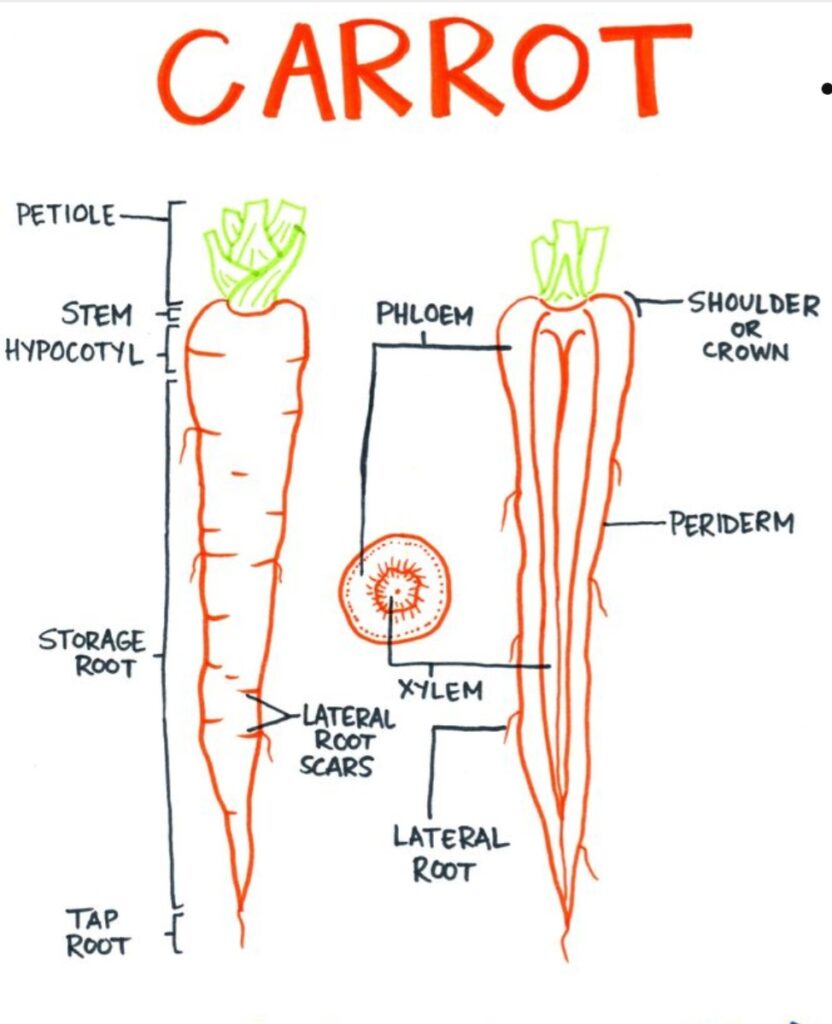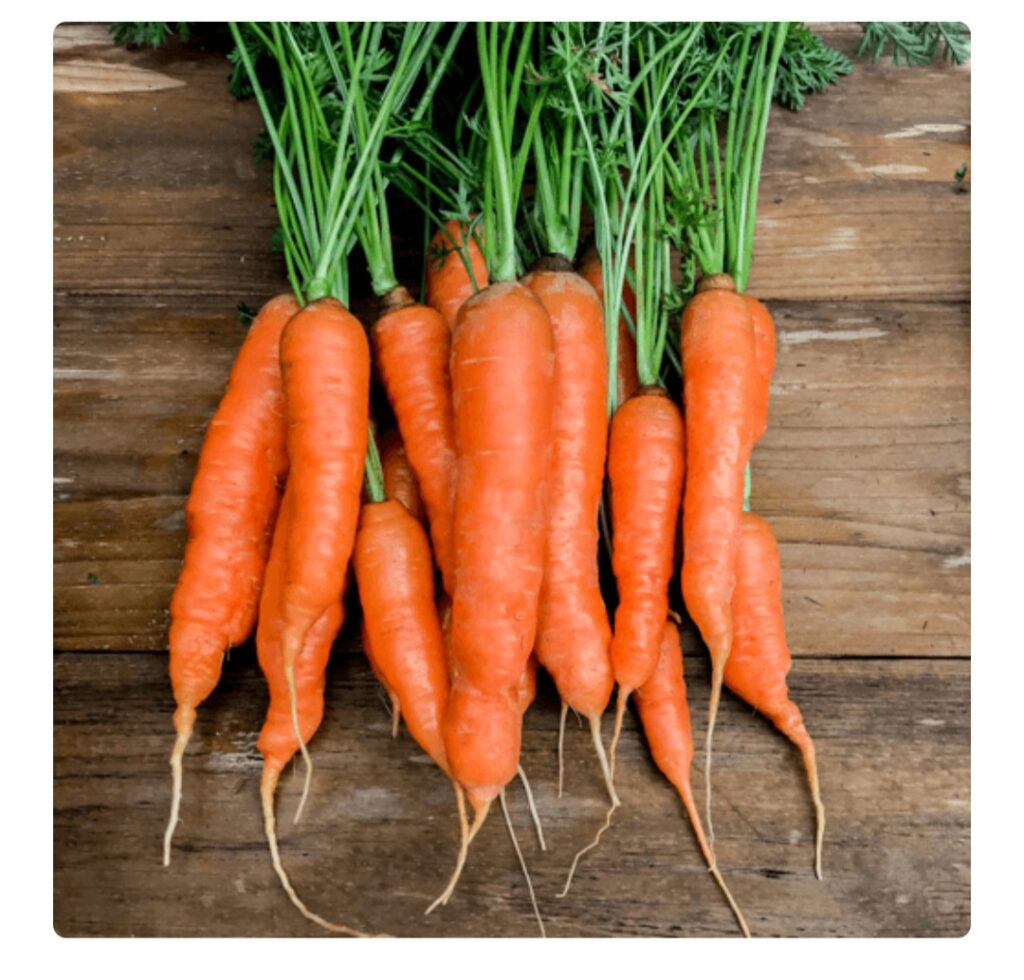
Carrot is domesticated form of the wild carrot and it is native to Europe and Asia. It is a root vegetable, belongs to the family Apiaceae, formerly refered to as Umbelliferae. It appears in orange or white or red-white blend in colour. It has crisp texture when fresh. DESCRIPTION: Carrot is a biennial plant but usually grown as annual. It is a cool climate crop. The taproot is the edible portion of the carrot; the foliage has no economic value. STEM: The stem is hollow, erect and very short with pinnated compound leaves. It can grow up to 30cm in lenght.
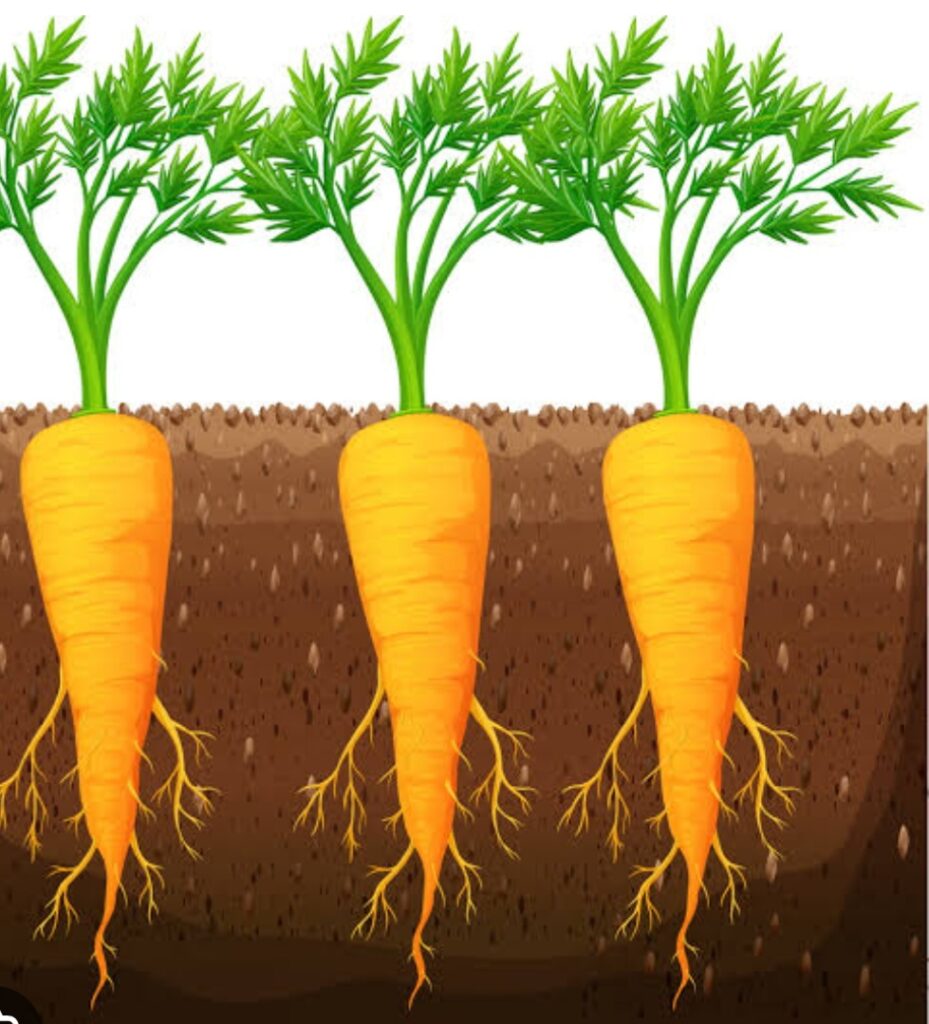
ROOT: It has a main taproot, with absorbent hairs but with no secondary root system. The root could be conical, cylindrical and tapered depending on the cultivars. It may grow to 20cm in length and a diameter of 3 to 4 cm. When carrot is grown in a deep homogeneous soils, the plant will develop a root system that may extend to a depth of 45 to 60cm. POLLINATION AND FLOWERING: carrot has a high level of cross pollination (insect). It produces small white flowers which are arranged in terminal umbels and have involucres ( protective group of bracts beneath a flower or flower cluster) of 2 to 5 deeply divided bracts. The main umbrella has bisexuality flowers, whilst the upper umbels bear an increasingly high number of male flowers. FRUIT: The carrot fruit is a diachene, a binocular schizocarp, which dries and splits upon maturity to yield two mesocarps (achenes) with one seed each. it is slightly elongated, striated lenghtways and with one flat surface and the other slightly bulged. SEEDS: The carrot seeds are small in size. under favorable conditions, the seeds will retain their viability for up to three years in storage.
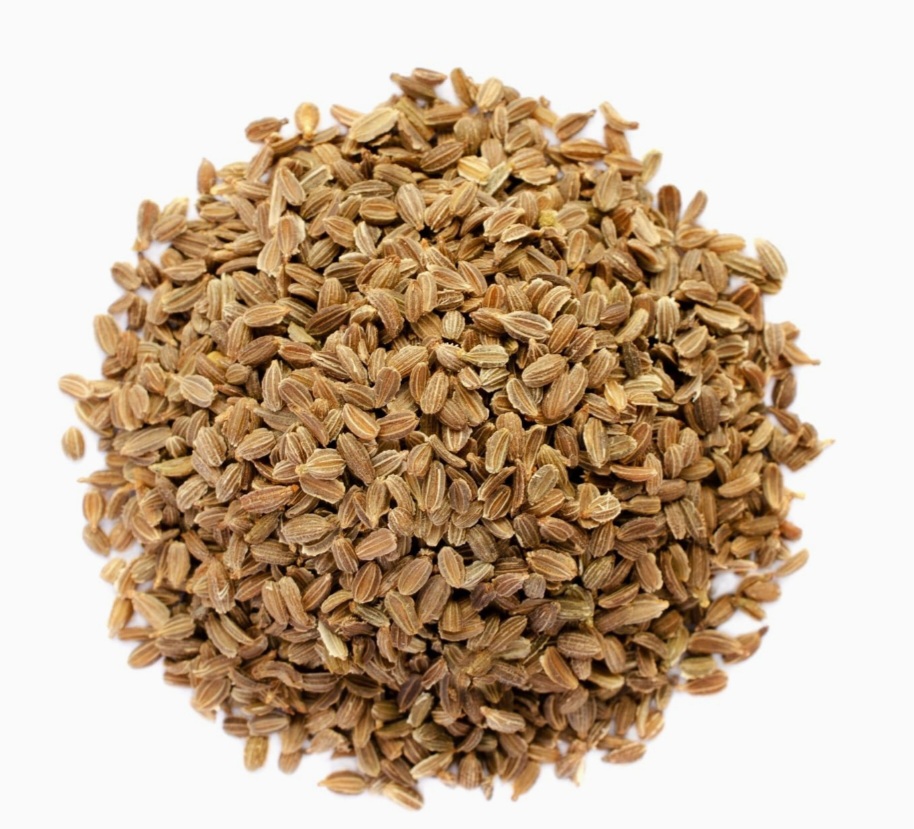
VARIETIES: There are over a hundred different varieties of carrot that vary in size and colour all over the world.Some varieties of carrots include:
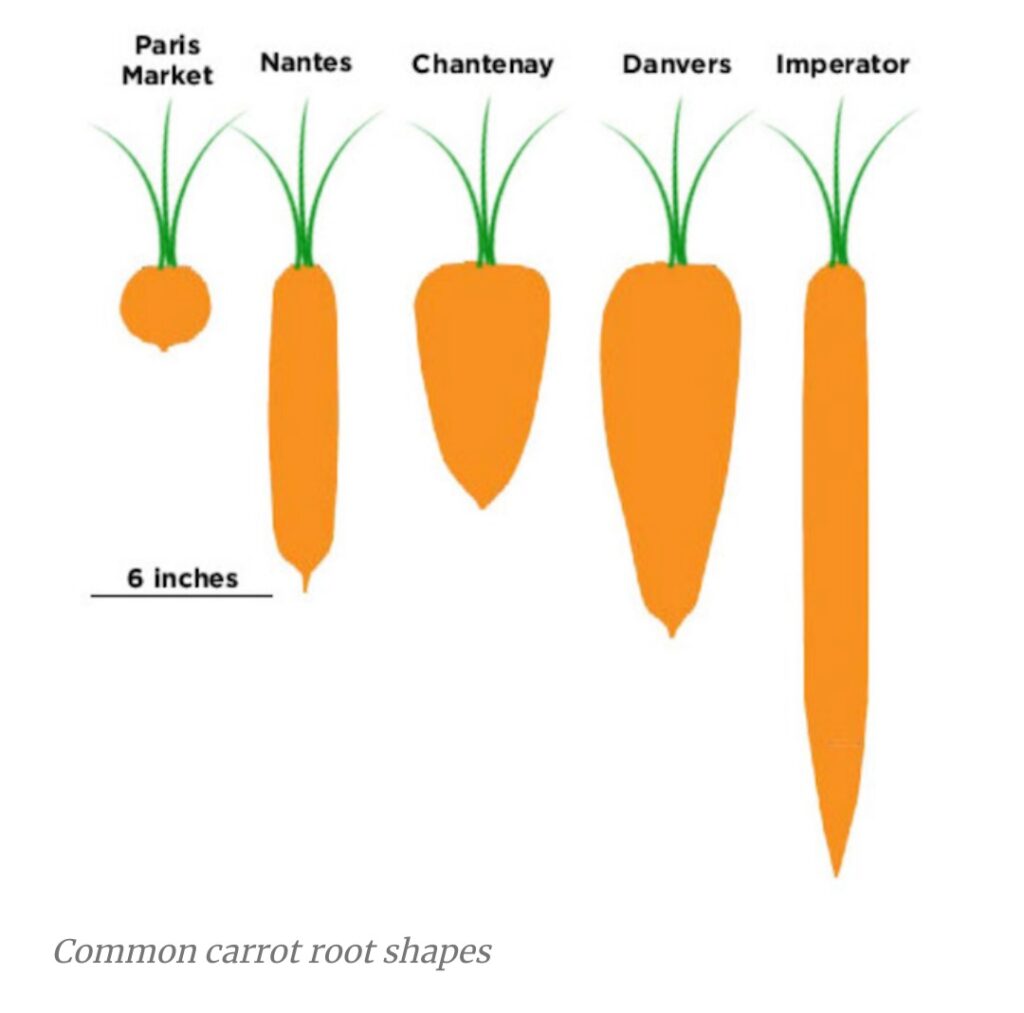
a. Nantes: It is a popular variety of carrot. It possess a sweet taste. It is almost cylindrical in shape, and round off at the end rather than tapering off. The core is small and the outer cortex is larger. Due to the fact that Sugars accumulate in its cortex, thus, Nantes possess its sweet taste. b. Imperator: This type is the most commonly grown carrot because of its high yields and long storage potential. They are long and tapered. They are a late-maturing variety, and generally have a larger, more fibrous core. Therefore, they do not have the sweet taste of other carrot types. c. Chantenay: This variety is an intermediate between a Nantes and an Imperator. They are tapered like the Imperator, but the bottom are rounds off like the Nantes. Chantenays are also sweet tasting like the Nantes. etc.
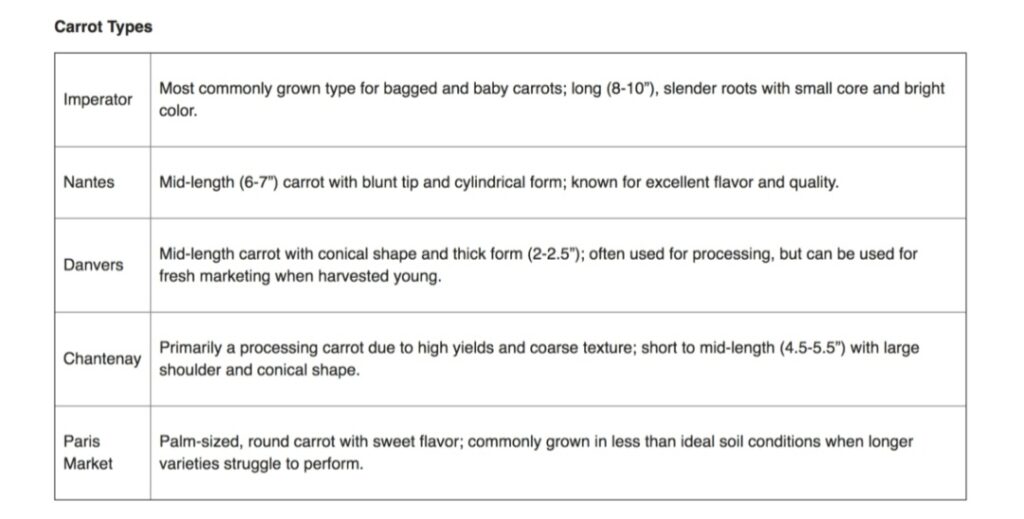
USES OF CARROT. 1. Carrot can be eaten in varieties of ways. it can be chopped and boiled,fried or steamed. 2. Carrot roots are used as vegetables for soups, stews, curries and pies and as salads. 3. Grated carrots are used in carrot cakes. 4. Carrot top (shoot) can be used as a source for extraction of leaf proteins. 5. Carrot tops are used as a fodder and also for preparing poultry feed. 6. Carrot juice is an healthy drink. It can be prepared to stand alone or blended with fruits and other vegetables.

7. Carrot roots are used to treat digestive problems, intestinal parasites, and constipation. 8. Carrot seeds are sources of essential oil. The carrot seed oil is used for flavouring liquors and all sort of food substitutes.
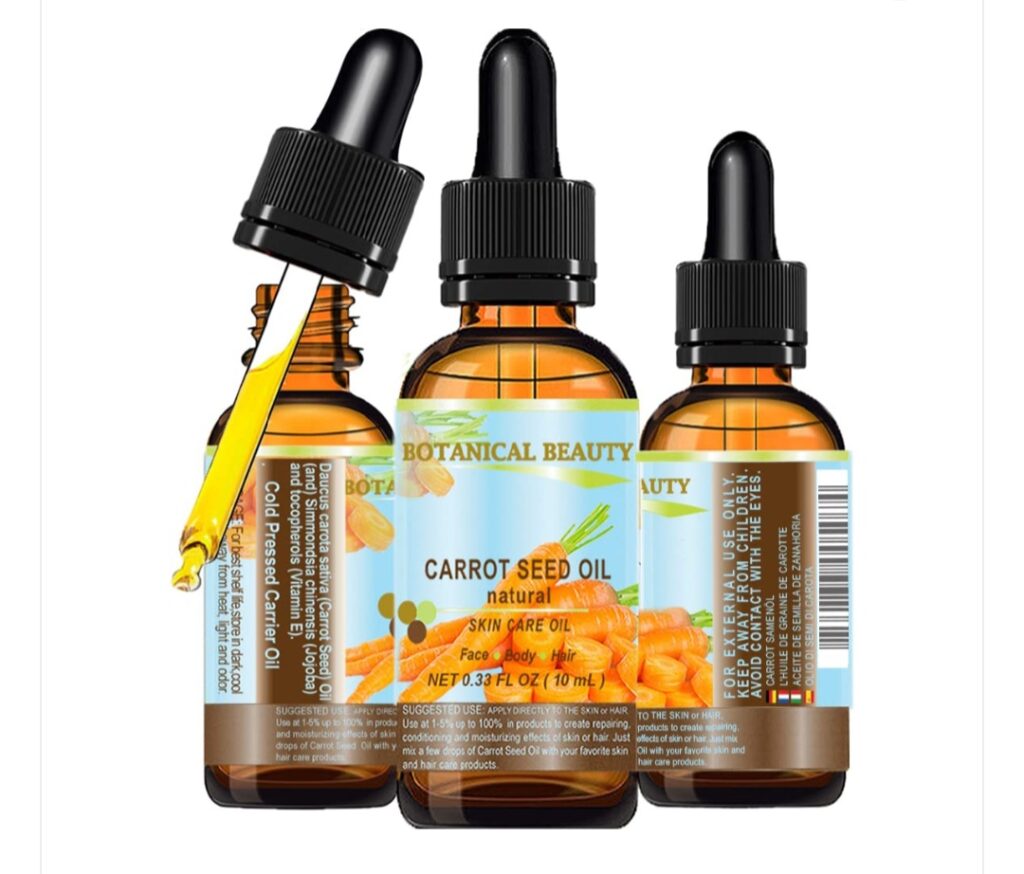
9. Carrots are excellent source of vitamin A, B1,B2 and vitamin C. 10. Carrot antioxidants help protect against cardiovascular diseases, cancer and also promote good vision. 11. High intake of carotenoid has being linked with 20% decrease in post menopausal breast cancer and 50% decrease in cancer of the bladder, cervix, prostrate colon, larynx and oesophagus.esophagus. 12. Carrot contain phytonutrients called falcarinod which provide protection against colon cancer.
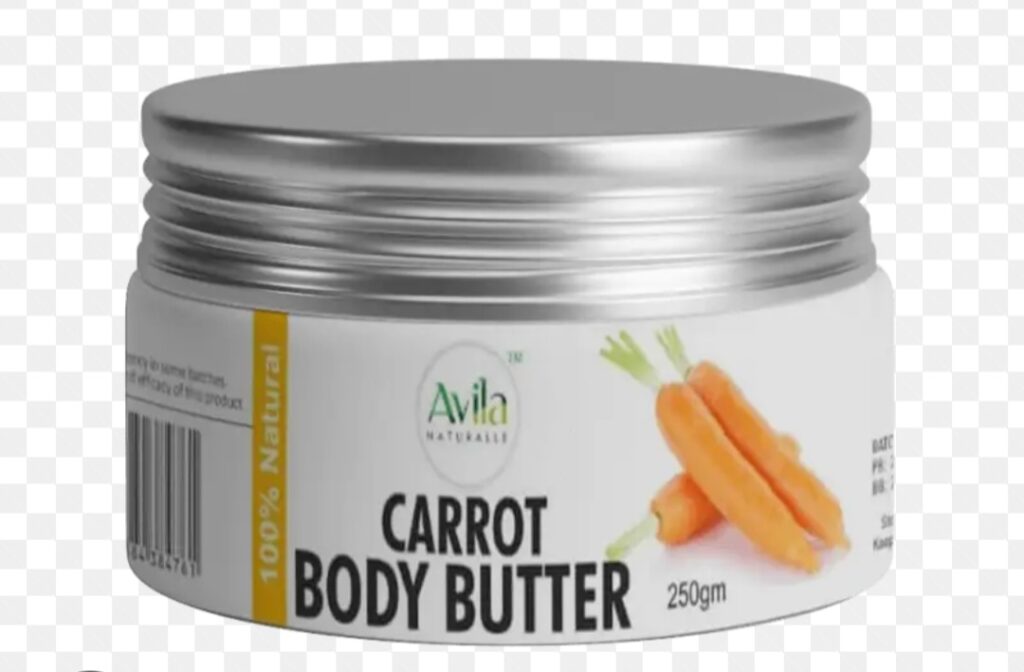
AGRONOMY OF CARROT. CLIMATIC REQUIREMENT: a) TEMPERATURE: Carrot is a cool climate crop. It grows best at temperature between 15oC and 21oC. Higher temperature above 25oC result in slow growth and the roots become shorter, thicher and non juicy and brightness of colour reduces. At low temperature below 15oC, the roots become longer and develop poor colour. b). SOIL REQUIREMENT: Carrot grows best under light, quite deep, rich, moist soil with a fine tilt and good water holding capacity. It requires a soil pH of between 5.5 -7.0. Sandy loam soils rich in humus, well drained, free clods and rocks are prefered for smooth straight roots. Heavy clay soils or soils which are compacted or stony can cause the forking of roots. c. PLANTING AND BED MAKING : Carrot seeds are sown in drills about 2cm deep and 15cm apart on beds. The Seedbed preparation must eliminate clods as they interfere with uniform growth of the roots. Planting deeper than 2.5cm will slow emergence. After sowing, the drills are covered with soil. After which the soil is damped and covered with mulch. The seedlings emerge after 10 to 15 days, depending on climatic condition. Carrot seeds vary from 80,000 to 180,000 per kg and are sown at the rate of 0.4 to 0.5 million seeds/hectare. The seeds vary in size, maturity, vigour, and germination time. Carrot seedlings do not tolerate crusting.
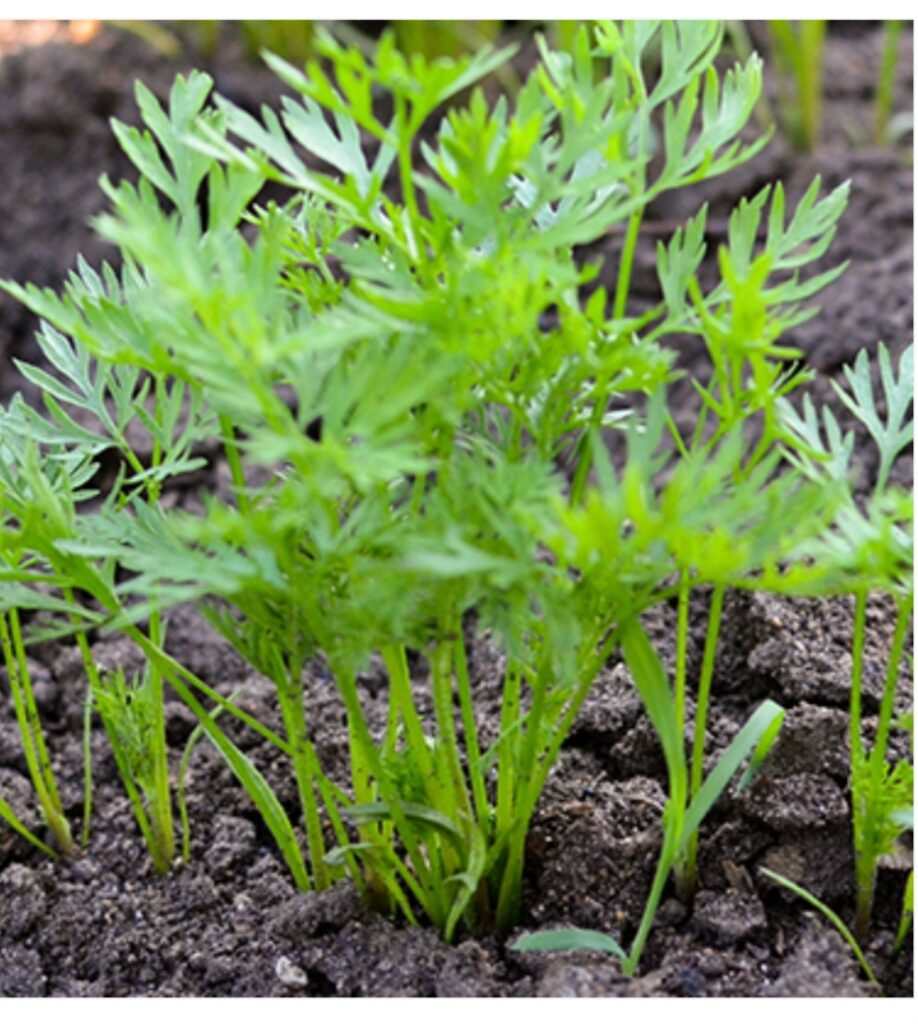
d). THINNING: Thinning should be done as soon as the seedlings are well established and have produced 3 to 4 leaves ( approximately one month after sowing). The plants are thinned to 5cm and 20 to 30 plants per meter are retained. e). WATERING: It is recommended that watering should be done immediately after all the above operations. Uniform watering is critical for good colour and root formation. If significant dry-wet cycle occur, the root will split. Excessive watering discourage s good colour formation and may encourage diseases. f). FERTILIZER APPLICATION: Fertilizer program should be based on soil test. Application of 80kg/hectare nitrogen, 60kg/hectare phosphorus and 60kg/hectare potash has being recommended for inorganic fertilizers. Half quantity of Nitrogen and full quantities phosphorus and potash should be applied at the time of sowing. The remaining quantity of Nitrogen should be applied 30 to 45 days after seed sowing. Carrot react unfavorable to an excess of Nitrogen ( causing branching and hairy fibrous roots) and respond well to murate of potash. Inorganic fertilizers may also be complimented with manure. Use of fresh manure shows that the liquid portion of the manure apparently stimulate branching of the roots. If manure is to be used, it should be well decomposed or composted before application. g). WEEDING: Since vegetative development is rather slow at the beginning, weeds should be controlled to avoid injuring the root. During weeding, the crown of the roots are often exposed to light. This causes greening and thus lowering the quality of the root. Hence, to prevent discolouration of the roots, earthening up is done.
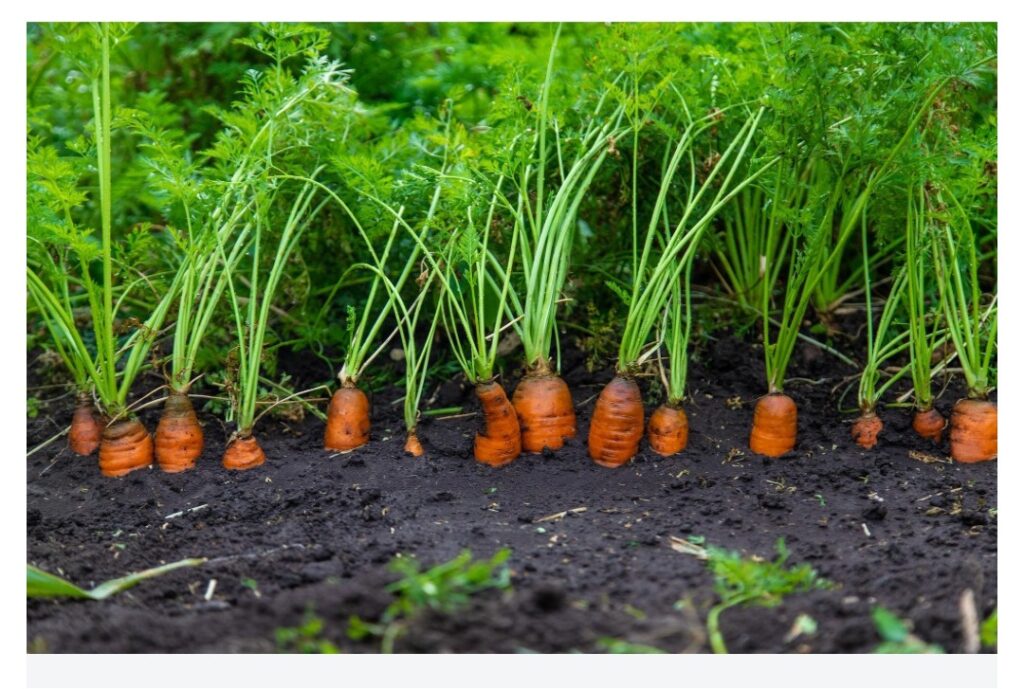
h). HARVESTING: Harvesting is done 75 t0 120 days after sowing. When harvesting, the bed should be drenched with water, this makes it easier to pull the carrot. Care should be taken so as not to wound the carrots during harvest to reduce the incidence of sclerotinia in storage.Carrots can also be harvested either by cutting off the tops, in a process called topping and using a hand trowel to lift the carrots, or by using a machine to pull out the carrots by the tops, and then topping them in the field.Topping usually occurs in the field, when most of the foliage are chopped off, with only 2.5 cm to 5 cm lenght of stem remaining. The rest of the stem is usually trimmed off prior to packaging. i). STORAGE: They are hardy vegetables that keep longer than other vegetables in the store. To preserve the freshness of the roots in the store, minimize the moisture loss by storing them in the coolest part of the refrigerator in a plastic bag which reduces the moisture loss. Carrots should be stored away from fruits and vegetables that produce ethylene gas, this will cause them to taste bitter. j). YIELD/HECTARE: The expected yield equivalent of carrot is 30 tonnes per hectare based on the planting space of 100 plants /m2. Among many factors affecting yield are: use of low quality seeds is a major factor. Factors that affect the yield and quality of the seeds include: optimum plant spacing, floral set, planting materials, nutrition, health of mother plants, root size, root age etc.
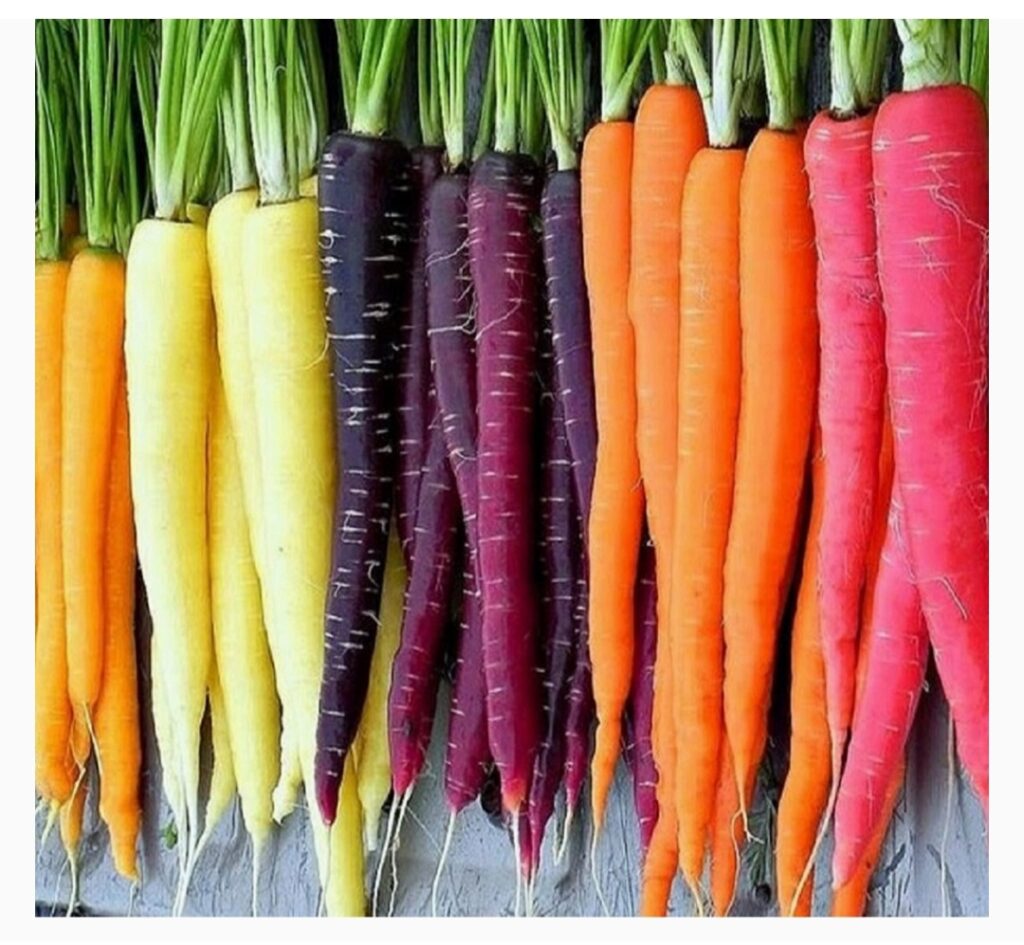
PESTS AND DISEASES OF CARROT. PESTS. 1. Carrot fly (Psila rosae): It is a serious pest of carrot. It is the only pest of carrot worth worrying about. They damage the root by creating grubs tunnels in the roots, disfiguring the roots and allowing moulds to gain entry into the roots. The carrot fly locate the carrot by its scents. CONTROL: Use of compost and wood ash. Crop rotation or interplanting with onions or garlic. 2. Other notable pests of carrots include: aster leaf hoppers ( Macrosteles quadrilineatus) which carries the pathogen called aster yellow disease. This is a virus-like disease. The leaf hoppers can be found near fields planted with forage legumes or weedy areas. Many perennial crop hosts including medicinal species such as Echinacea are potential hosts for aster yellow.Symptoms of aster yellows include witches’-broom appearance to the foliage, the growth of lateral, hairy roots from the taproot, and a yellowing and then bronzing of the foliage. CONTROL: Spray insecticides. 3. Bean aphids ( Aphis fabae) 4. Green peach aphids ( Myzus persicae) 5. Black swallowtail ( Papilio polyxenes)
DISEASES. The important diseases of carrot include; carrot yellows, leaf blight, root and crown rot, and root knot diseases, mildew, fusarium, dry stain disease, black rot, sclerotinia rot etc. Sclerotinia : It is caused by Sclerotinia sclertiorum. It is both field and storage disease of carrot. Symptoms: include foliage that is dark brown and coated with a whitish mould. Later on, black dots (sclerotia) will appear amid the white mould (mycelium). Infected carrots become soft and watery in storage. White mould covers the infected carrot, and the black sclerotia will follow. CONTROL : control of sclerotinia begins with crop rotation and careful handling as carrots are harvested and put into storage. The storage units should be cleaned and disinfected prior to harvest. Avoid crop rotations with crops susceptible to sclerotinia, such as most all vegetable crops except sweet corn, beets, onions and spinach. Sclerotinia can persist in the soil for three to five years, therefore it is best to rotate with cereals and forages to break the disease cycle. SOME OTHER DISEASE TREATMENT: The seeds should be treated with a fungicide, to prevent seedling blight, damping off and seed decay.
